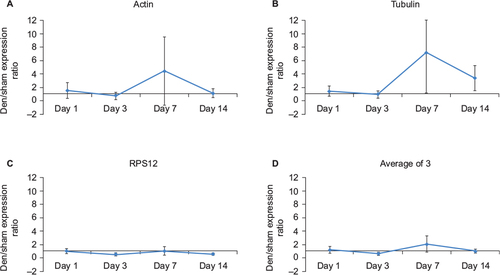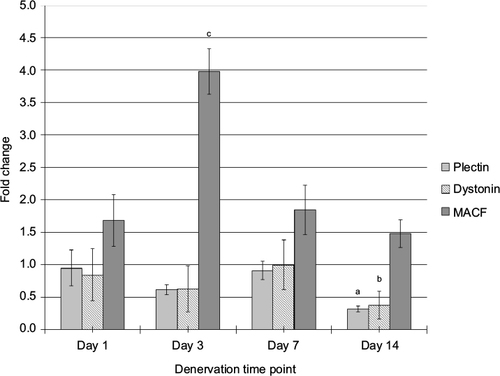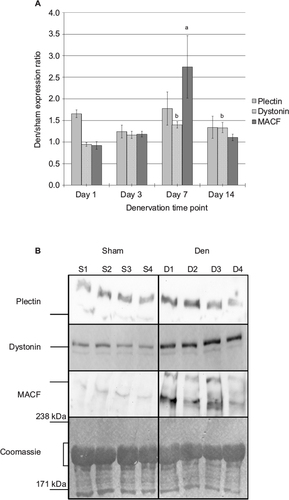Figures & data
Figure 1 Comparison of four potential normalization candidates for qPCR data.

Table 1 Mouse gastrocnemius mass (mg) normalized to body weight (g)
Figure 2 Impact of denervation on plectin, dystonin, and MACF mRNA expression levels.

Figure 3 Impact of denervation on plectin, dystonin, and MACF protein expression levels.

